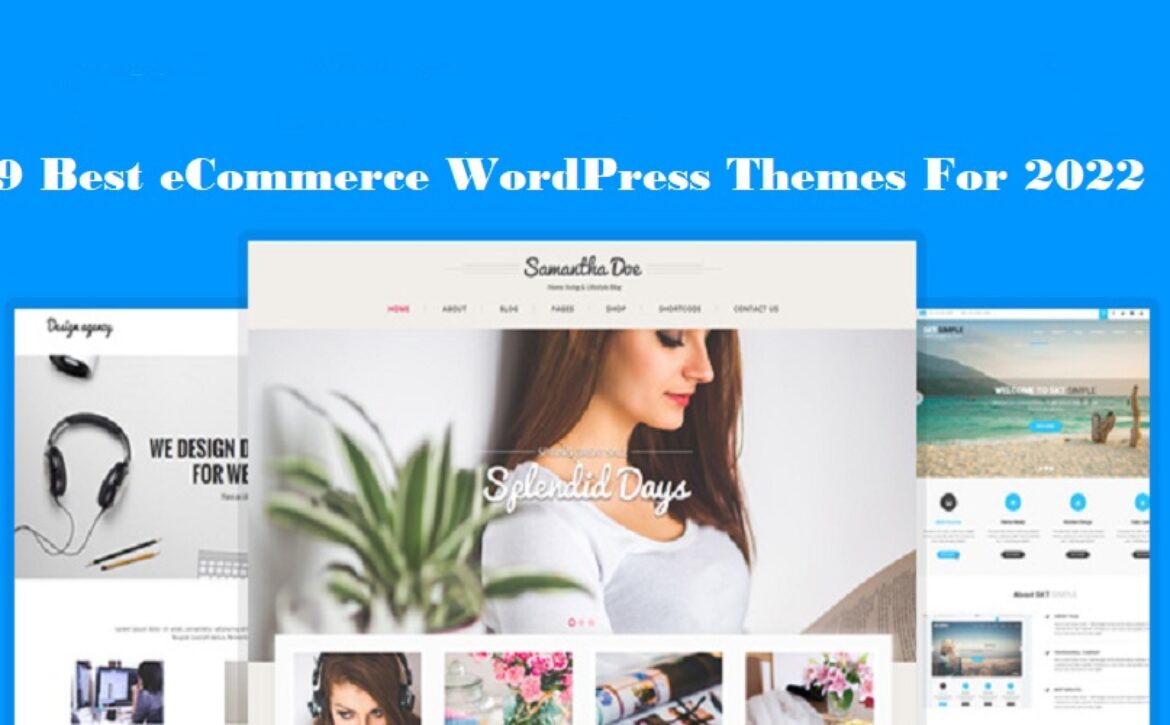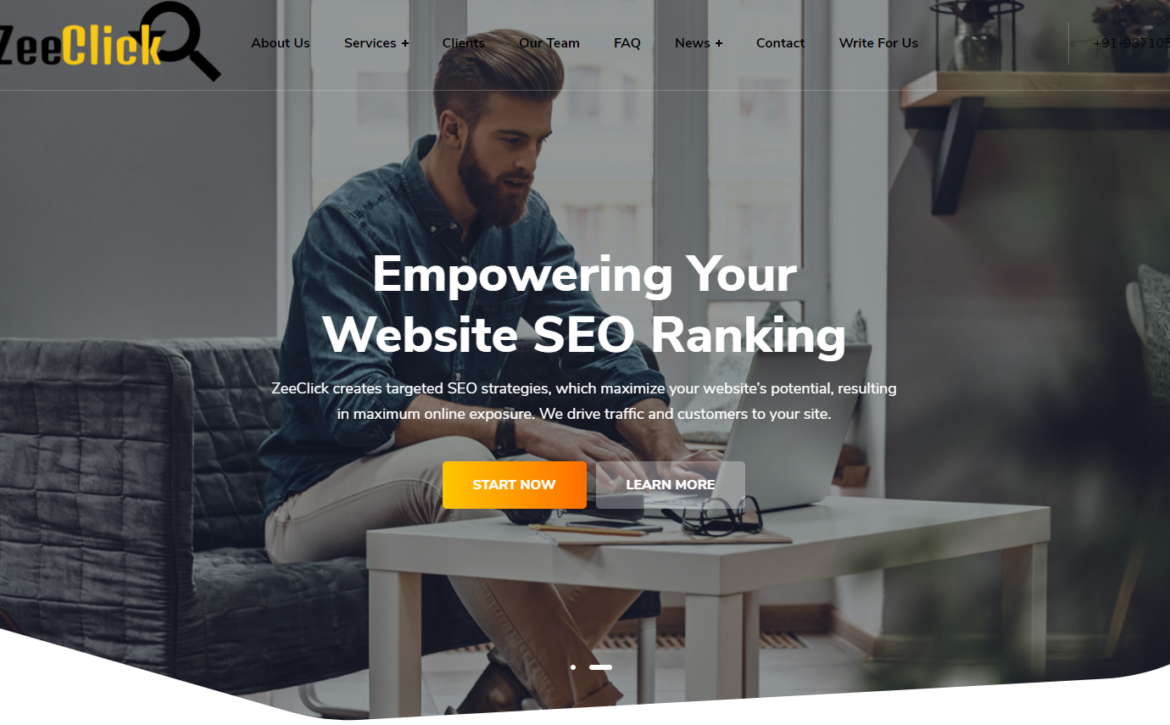9 Best eCommerce WordPress Themes for 2023
WordPress is popular with developers, individuals and businesses because of its versatility, diligence, customizable capabilities and plug-ins and of course, themes. It has always been popular as a blogging platform, but it has evolved, thanks to its huge community support, to cater to the growing needs of the web world. Today, WordPress is used for creating multiple types of websites including complex eCommerce sites.
With more and more retailers going online for global expansion and increased sales, WordPress is in demand since it provides budget-friendly options to create full-fledged, feature-rich and artful eCommerce stores. This post presents you with a list of nine first-class, crafty and functional themes which are packed with tools to help you get highly presentable and exclusive online stores for your business.
1) TheGem
This resourceful WordPress theme is famous for its creative designing elements. It contains an epic set of tools and houses over 400 unique page templates, around 8 navigational concepts and more than 50 widgets. Most of the features can be accessed for free but some premium ones are available for the paid version.
Though suitable for building online stores for any industry, its elegance and contemporary look make it ideal for lifestyle, fashion, accessories and food products. It comes with some cool plug-ins like TheGem Elementor, TheGem Blocks and TheGem WPBakery. Other remarkable features of this theme include:
– Navigation and header layout options with more than 20 pre-made styles
– Compatible with SEO plug-ins, Google Analytics and social media integrations
– Fully customizable to give a unique touch
– Support for both multi-page and one-page websites
– WooCommerce ready for building versatile eCommerce sites
2) Shopkeeper
Shopkeeper is great when it comes to building highly professional-looking online stores. With a flexible, fluid and responsible layout, this theme easily fits into any device and adjusts into any screen size. It has an array of predefined WooCommerce templates which enable businesses to be up and running in no time. Because of its plethora of designing elements and its customization capabilities, Shopkeeper can be easily moulded to be made fit for any industry.
In addition to its eCommerce site-building tools, it comes packed with an impressive collection of blog layouts. You can use these layouts to design a beautiful, personal blog and impress your consumers with extra resources. Some more features adding to Shopkeeper’s delights are:
– Unlimited combinations for header styles including fonts, colours and icons
– Visual customizing options and drag-and-drop components
– Little to no coding knowledge required
– Built-in support for multiple languages and multiple currencies
– Compatibility with high-end plug-ins like WPBakery, WordPress Block Editor and Elementor Pro
3) Astra
Astra comes to rescue for all those businesses and developers who are new to WordPress and are looking for something to get started with. This lightweight WordPress theme is known for offering seamless customization options, availability of numerous free extensions and its slick layout settings. It can be used with some of the popular WordPress plug-ins like Beaver Builder, LearnDash, WooCommerce, Elementor and Toolset.
Astra has two versions – one that you can use for free and the pro version which comes with additional settings and premium layouts and offers a higher degree of customization. However, it offers unparalleled performance in both versions courtesy its awesome features. Some of those awesome features are:
– Built-in tools for building blogs and portfolios along with online stores
– Compatibility with Gutenberg blocks
– Custom colors and fonts
– Built-in header layouts and dedicated sidebar
– Plenty of pre-built websites available for demos
4) Botiga
Nominal design, clean background and highly customizable – Botiga is the theme you want to go for if you want a neat and sophisticatedly designed online shop. Since it’s a complete WooCommerce theme, you can get your e-store up and running in no time. Right from sorting design elements to tailoring card style, Botiga provides the users with everything required to run a modernized eCommerce site.
It has a clear and decent cart layout and comes with three different gallery styles to choose from and display your products on the site. Since it already comes optimized for the block editor, it becomes easy to scale your online shop for further expansion, hence making it future-proof. Other noticeable features of this theme include:
– Different badge styles for displaying product status
– In-built colour palettes
– Advanced settings for typography
– New pagination and product tab styles (available with Pro version)
– Modern and advanced star ratings and review styles (available with Pro version)
5) Flatsome
Flatsome is a multi-purpose theme which works great for creation of eCommerce stores, standalone websites and for portfolios. It has a responsive page builder which makes designing possible with minimal coding. It is compatible with the latest versions of both WordPress and WooCommerce. It allows users to utilize the Theme Option panel to blend and create unique settings with headers, pages and fonts.
Its front-end page builder provides drag-and-drop functionality for structuring content. Its layout elements are useful in easy creation and alteration of layouts. Its UX builder comes with a massive element library which consists of a toolbox which has around 9 shop elements and 30 content elements. Some other amazing features of Flatsome are:
– Drag-and-drop header builder with boundless footer options
– Sliders optimized for mobile along with responsive slider and banner system
– More than 700 Google Fonts
– Optimized for SEO and rich snippets
– Flawless CSS animations and stunning parallax effects
6) Jayla
This modern, minimalist and multi-concept WordPress theme is known for its responsiveness, scalability and advanced customization options. Besides letting users carry out page building via Visual Composer and Bootstrap framework, it enables them to experiment with Multi builder blocks and easily set up a professionally designed commercial store.
Since it is 100% compatible with WooCommerce plug-in, it provides access to extensive features. Whether you’re up to build a chic-looking fashion store or a neatly-crafted store for selling kitchen items, Jayla has got something for everything. Other highlighted features of this theme are:
– Support for more than 800 Google fonts
– Support for 10 different types of demo packages
– CSS Style editor tool
– Products filter for Woo
– Yoast SEO compatible with toolset for SEO optimization and support for Jetpack Portfolio
7) Savoy
Savoy is an AJAX WooCommerce theme which is known for being lightweight, responsive and minimalistic design. This high-quality theme is mostly used for designing and developing elite online stores. It has color swatches and labels to show product status and is equipped with different blog styles to help owners have their own dedicated blogs exclusive to their store.
Savoy owes its popularity to its powerful features like advanced Header features, simple and hassle-free installation and since it’s a completely AJAX enabled shop, users hardly require extra plug-ins. Other significant features of this elegant WordPress theme are:
– WPML plug-in compatible and hence prepared for multi-language
– Automatic theme updates from Envato
– Supports 1000+ Google fonts and for Adobe fonts
– Multi-column drop-down menus
– Cart panel available with AJAX quality controls
8) Porto
With over 120 pre-build websites and around 67000 websites already up and running, Porto serves as an ideal theme for building your online store. It is constantly updated and follows the modern designing trends along with the best coding practices. It is responsive, SEO-optimized and comes with more than 30 distinct layouts to help set up the ecommerce store of your dreams.
It is compatible with most premium WordPress plug-ins including WooCommerce, WPBakery, Gutenberg and Elementor. It presents users with excellent theme options and a highly innovative visual content editor. The best part is that it is completely customizable and even permits developers to combine required features from other demos to suit their needs. Some other notable features of Porto are:
– An extremely resourceful Admin Panel for website configuration without coding knowledge
– A huge library of predefined layouts and designing elements and sections
– Speed Optimize Wizard for freeing up site of unnecessary resources
– Availability of pre-built headers, page headers and navigations
– Live AJAX search for displaying quick results
9) Atelier
The WordPress theme Atelier is synonymous with elite and classy. This beautiful, multi-purpose theme is powered by WooCommerce and encloses a range of pre-built layouts in its demos for creation of visually-appealing eCommerce stores. Though it is good to go for any kind of commercial store, clothing, cosmetics, food and décor stores will find it absolutely fitting.
Users get to pick from five varieties of cart animations, four different styles of product display and three distinct cart styles. It also has 40 different custom icons meant exclusively for Atelier. It is responsive, retina ready and is SEO-optimized as well. A few other distinctive features of Atelier include:
– Supports WPML and hence is 100% translatable
– Custom mobile menu and auto theme updates
– Styling and theme options for bbPres and BuddyPress included
– Includes embeds for colourised Google Maps
– More than 500 icons ready to be used with content
Conclusion
When it comes to elite, competent and functional themes, WordPress is teeming with them. These themes can help businesses land their own stunning online shops with all required features. But the very presence of indefinite themes confounds users and they often feel lost as every theme looks appealing.
The nine themes described here are good enough to give you a head start as they are attractive, are equipped with toolsets and are easy to use. Although most of them don’t require coding knowledge, it is wise to hire WordPress development services as the technical expertise of professionals will prove effective in making your eCommerce store more unique and stunning.


